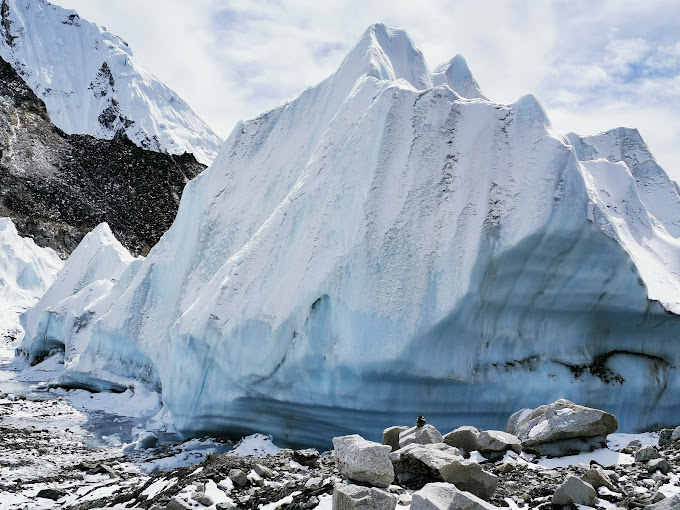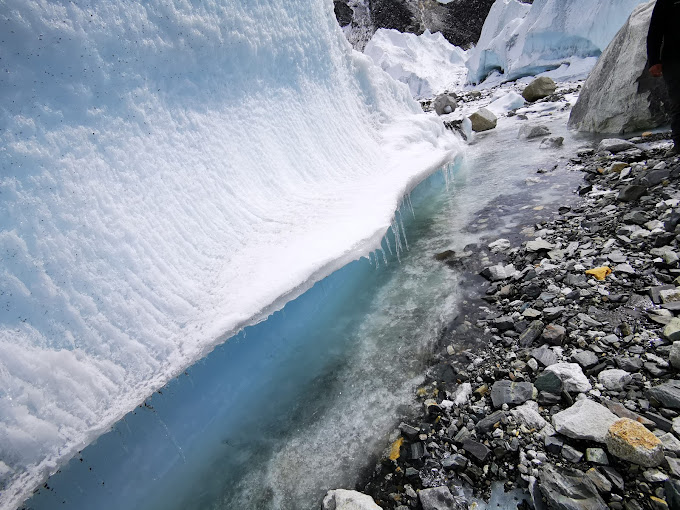The Everest Base Camp Trekking is a once-in-a-lifetime adventure that takes you on a remarkable journey through the breathtaking landscapes of the Himalayas. Located in the Khumbu region of Nepal, this trek offers a unique opportunity to witness the majestic Mount Everest up close, standing tall at a staggering height of 8,848 meters above sea level.
The journey begins in the bustling city of Kathmandu, where trekkers gather their supplies and make final preparations before embarking on this epic adventure. After a short flight to Lukla, the real trekking experience begins. The trail winds through picturesque villages, dense forests, suspension bridges, and high-altitude mountain passes, providing trekkers with an awe-inspiring experience at every step.

One of the highlights of the Everest Base Camp Trekking is the chance to interact with the local Sherpa people. Known for their mountaineering skills and warm hospitality, the Sherpas play an integral role in making this journey a memorable one. Trekkers have the opportunity to immerse themselves in Sherpa culture, visiting monasteries, experiencing traditional ceremonies, and learning about their way of life.
As trekkers ascend higher into the mountains, the landscape transforms into a rugged and barren terrain, offering breathtaking views of snow-capped peaks, including Lhotse, Nuptse, Ama Dablam, and of course, the mighty Everest itself. The trek requires physical endurance and mental resilience as trekkers navigate challenging trails, overcome altitude sickness, and acclimatize to the thin air.

Along the way, trekkers make strategic stops at teahouses and lodges, providing much-needed rest and sustenance. These cozy establishments offer a welcome respite from the cold, serving warm meals and providing comfortable accommodations amidst the harsh mountain environment. Sharing stories with fellow trekkers from all around the world creates a sense of camaraderie and makes the journey even more enriching.
Reaching Everest Base Camp is a moment of triumph for every trekker. Standing at an altitude of 5,364 meters, the base camp offers a surreal view of the Khumbu Icefall, a treacherous yet awe-inspiring obstacle that mountaineers face on their way to the summit. The overwhelming sense of achievement and the realization of being in the presence of the world’s highest peak make this moment truly unforgettable.

While the trek to Everest Base Camp is undoubtedly challenging, it is accessible to individuals with a reasonable level of fitness and determination. However, it is essential to prepare adequately and seek guidance from experienced guides or tour operators to ensure a safe and enjoyable experience. Trekkers must also be mindful of the fragile ecosystem and respect the local customs and traditions to preserve the pristine beauty of the Himalayas.
The Everest Base Camp Trekking is a transformative journey that immerses trekkers in the awe-inspiring beauty of the Himalayas. From the vibrant streets of Kathmandu to the rugged trails leading to the base camp, every step of the way is filled with breathtaking landscapes, cultural encounters, and personal growth. The sense of accomplishment upon reaching Everest Base Camp is unparalleled, making this adventure a true bucket-list experience for adventure enthusiasts and nature lovers alike. Embark on this majestic journey, and let the roof of the world leave an indelible mark on your soul.

The best time to visit Everest Base Camp trek is during the pre-monsoon (spring) and post-monsoon (autumn) seasons, which offer the most favorable weather conditions for trekking in the Everest region. The specific months to consider are as follows:
Spring Season (March to May): This is one of the most popular times for the Everest Base Camp trek. The weather during spring is generally stable, with mild temperatures and clear skies. The trails are filled with blooming rhododendrons and other colorful flowers, adding to the scenic beauty. However, it can be a busy time on the trails due to the high number of trekkers.
Autumn Season (September to November): Another ideal time for the Everest Base Camp trek is during autumn. The weather is generally clear and stable, offering excellent visibility of the stunning mountain panoramas. The temperatures are mild, and the trails are less crowded compared to the spring season. Autumn also provides a chance to witness traditional festivals and cultural celebrations in the region.

During both spring and autumn, the average daytime temperatures in the lower elevations range from 10°C to 15°C (50°F to 59°F). However, at higher altitudes, temperatures can drop significantly, especially during the nighttime, requiring warm clothing and proper gear.
It’s important to note that the Everest region experiences cold temperatures and occasional snowfall during winter (December to February) and the monsoon season (June to August). These seasons are generally not recommended for trekking to Everest Base Camp due to the higher chances of unfavorable weather conditions, limited visibility, and increased risks of avalanches and landslides.

Ultimately, the best time to visit Everest Base Camp depends on personal preferences, fitness levels, and the ability to cope with varying weather conditions. It’s advisable to consult with experienced trekking agencies or local guides who can provide more specific information and help plan your trek according to your preferences and abilities.
beginners can certainly embark on the Everest Base Camp trek, provided they have a reasonable level of physical fitness and mental preparation. While it is a challenging trek, it is not limited to experienced trekkers or mountaineers. it’s important for beginners to adequately prepare themselves before undertaking the Everest Base Camp trek. This includes engaging in regular exercise to improve cardiovascular endurance, strength training to build muscle strength, and practicing hiking on uneven terrains to familiarize oneself with trekking conditions.
For individuals with children, it is possible to bring them along on the trek, but it’s crucial to consider their age, physical fitness, and their ability to handle long hours of walking. It’s generally recommended for children to be at least 12 years old to undertake the Everest Base Camp trek due to the physical demands and high altitude. If you are planning to trek with children, it’s advisable to choose a slower-paced itinerary, allowing for more rest days and gradual acclimatization. Additionally, keeping them motivated and engaged during the trek by sharing interesting facts about the mountains, wildlife, and local culture can make the experience more enjoyable for them.
To ensure the safety and comfort of both beginners and children, it is highly recommended to hire an experienced guide who can provide support, guidance, and necessary precautions throughout the trek. The guide will be able to assess individual fitness levels, adjust the pace accordingly, and monitor altitude sickness symptoms.